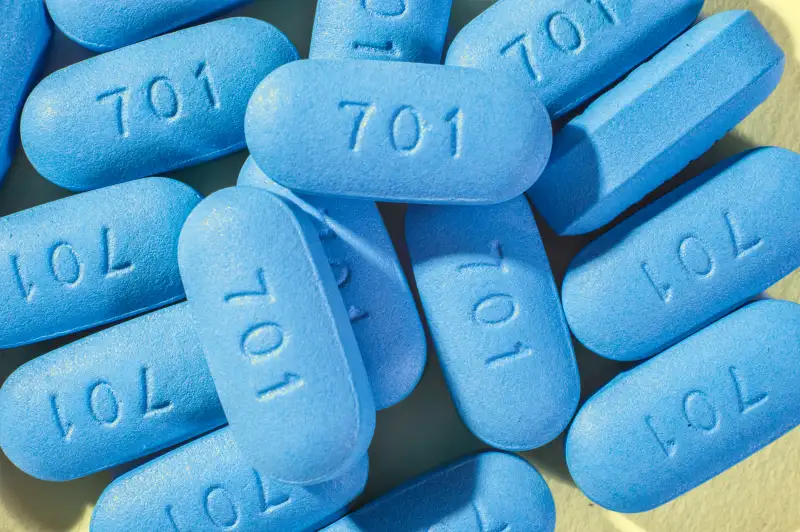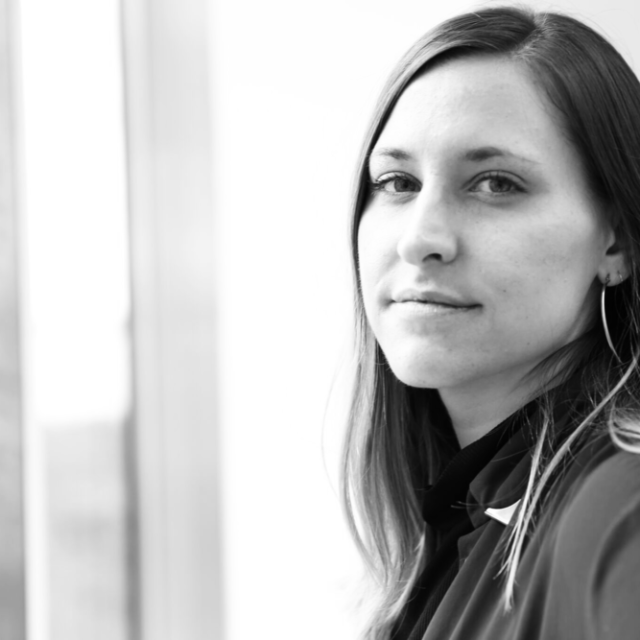This HIV Drug Is Making a Difference. Now Republicans Want to Make It Unaffordable

Evan J. Peterson learned about AIDS before he knew what “gay" meant. A child of the '80s, he recalls growing up in an age when he was constantly told that sex could kill him.
“Having to form a sexual identity in that era was a burden," he says.
Now, Peterson takes Truvada, a pre-exposure prophylaxis (“PrEP”) that lowers his risk of contracting HIV by close to 99%. The once-a-day pill allows Peterson to say he's negative with reasonable certainty, in addition to test results and the integrity of his sexual partners. “We have control of our own health," he says. "I'm going to stay on [PrEP] until I either don't need it anymore or they pry it from my hands."
The thing about PrEP, as it's commonly referred, is that it's expensive: roughly $1,500 a month without insurance (with insurance, it can cost anywhere from $0 to $500). Peterson, a Seattle-based professor and author of “The PrEP Diaries,” gets coverage through an employer health plan, but once relied on Washington's drug assistance program (DAP), which started covering PrEP after the Affordable Care Act’s Medicaid expansion began insuring people who used to go through DAP.
Future "PrEPers" might not be so lucky. House Republicans released a long-awaited blueprint to replace the ACA on Monday, confirming plans to eliminate Medicaid expansion and other key Obamacare features. The proposed plan would complicate PrEP access, particularly for low-income Americans in the 31 states, plus the District of Columbia, that adopted the Medicaid expansion.
The new bill would begin phasing out federal money for the expansion in 2020, likely blocking new applicants and access to meds like PrEP. If the plan passes in its current form, traditional Medicaid will be replaced by per-capita grants, a fixed-sum per person, which could result in cuts over time. And a proposed repeal of the ACA's cost-sharing assistance, which paid insurers to reduce the burden of enrollees based on their income, would make coverage more expensive for poor Americans, says Lindsey Dawson, senior HIV policy analyst of the Kaiser Family Foundation.
Gilead, Truvada’s manufacturer, provides some co-pay assistance through a self-funded program, but it’s unclear of how that program will fare after the ACA repeal. Gilead declined to comment.
To be clear, these are uncertain times for many facets of health care. But gutting PrEP access would mean losing a critical shield in the fight against HIV.
“No matter which way you spin it, a repeal would be devastating,” says Noël Gordon Jr., a senior program specialist for HIV prevention & health equity at the Human Rights Campaign. “It would not only halt the progress we’ve made, but it has the potential to turn the tide the other direction, where we could potentially see the spread of HIV.”
The GOP’s plan comes at a critical juncture in PrEP’s adoption, advocates say. Though Truvada has been on the market for HIV treatment since 2004, it was only approved by the FDA for prevention in 2012. Adoption rates have suffered a slow start: Prescription data from Gilead (which doesn’t include Medicaid data) shows that nearly 80,000 people started PrEP from 2012 to 2015, a far cry from the roughly 1.2 million Americans the CDC estimates are “good candidates” for the drug. Still, that's a sharp rise from the less than 1,300 prescriptions that were written in all of 2012 alone.
“When PrEP was first approved, gay and bisexual men were not using it,” Gordon Jr. says. “Now, we’ve seen an exponential increase in users.”
In pockets of LGBTQ communities, PrEP is catching on. Rich Juzwiak, a New York-based writer and editor who has been taking PrEP since 2014, says there’s more dialogue surrounding the drug now than ever before. Dating apps like Grindr now have the option of listing “PrEP status,” he says, and come with an popup definition of the drug that users can hover over. “A few years ago, people were clueless,” Juzwiak says. “Now, everyone knows someone who is on it. It feels like a cultural shift.”
For others, though, PrEP access is precarious at best.
A recent survey that polled more than 14,000 gay men in the U.S. found that only 2% of men living in rural areas reported using PrEP, compared with 17% in San Francisco and 12% in New York City. As the CDC found, Medicaid expansion states that have a perfect storm of high poverty and HIV infection rates are the most vulnerable to an Obamacare repeal.
Now, prevention advocates fear some communities will never get a chance to play catch up — especially if Medicaid vanishes.
“There’s a knowledge gap,” says Kenyon Farrow, a Washington, D.C.-based PrEP user and a policy director at Treatment Action Group. “Last year, I was in Atlanta, I had an Uber driver who was an older black woman. I told her about PrEP, and that it had been on the market since 2012. And she started crying. She told me she has two nephews, 23 and 25, who are both HIV positive. Both [cases] could have been prevented.”
